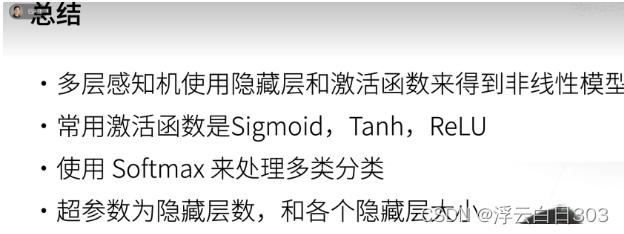

多层感知机

ReLu的存在,是为了调节X平方或者高次方前边的系数,组合起来更贴近你想要的那条曲线用的
多层感知机的简洁实现
##多层感知机的从零实现
import torch
from torch import nn
from d2l import torch as d2l
batch =256
train,test = d2l.load_data_fashion_mnist(batch)
#单隐藏层感知机
hide = 256
input = 784
output = 10
w1= nn.Parameter(torch.randn(input,hide,requires_grad=True))
b1 = nn.Parameter(torch.zeros(hide,requires_grad=True))
w2 = nn.Parameter(torch.randn(







 本文介绍了如何使用PyTorch实现一个包含单隐藏层的多层感知机,重点讲解了ReLU激活函数的应用、权重初始化以及使用Sequential模块构建简洁网络结构。
本文介绍了如何使用PyTorch实现一个包含单隐藏层的多层感知机,重点讲解了ReLU激活函数的应用、权重初始化以及使用Sequential模块构建简洁网络结构。
 最低0.47元/天 解锁文章
最低0.47元/天 解锁文章


















 被折叠的 条评论
为什么被折叠?
被折叠的 条评论
为什么被折叠?








